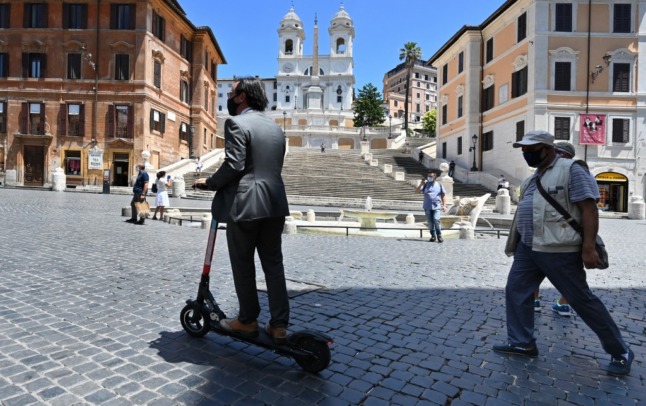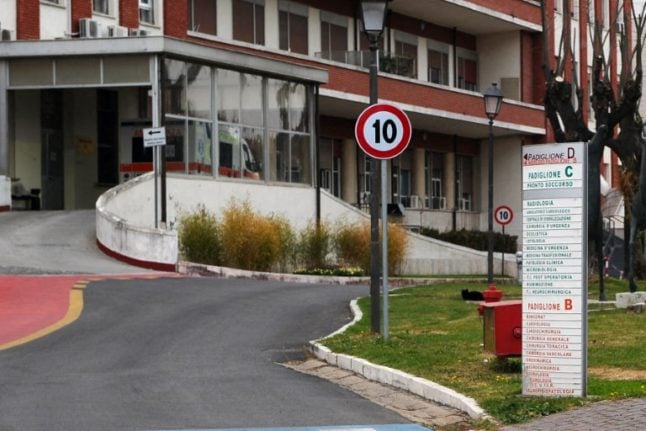It may be hard to believe, but two full years have now passed since Italy began to lock down towns in northern Italy after Europe’s first known outbreaks of coronavirus were confirmed.
By early March 2020, Italy had become the first Western country to declare a nationwide lockdown.
In the intervening two years, Italy has been through a lot – and we think it’s fair to say that the country will never be quite the same again.
Not all of the changes are negative, however.
As we look ahead to the gradual easing of Italy’s remaining restrictions and the return of a more normal life in the coming weeks and months, here’s a look at some of the ways in which Italian culture and society has changed.
Less kissing, more personal space
Is the famous Italian two-kiss greeting gone for good?
While you might still give a close friend or a family member a little peck on the cheek, gone are the days where you’d stand in a circle knocking jowls with people you’d met just moments before.
In fact, the concept of personal space in general is now better understood and more widely practiced in Italy than it ever was in the past – whether it concerns touching between acquaintances, or crowding at the post office.
READ ALSO: Eight things the Covid crisis has taught us about Italy
That’s not to say people are now keeping their distance at all times. But generally speaking, in public spaces most people are still keen to avoid pressing up against one another even in situations where social distancing is no longer really monitored.
This means ticketing systems have in many areas replaced queues – and where they do exist, lines are far more likely to be respected, with healthy gaps maintained between the people forming them.

This new awareness of and respect for personal space will be a striking difference for anyone returning to Italy for the first time since the pandemic began.
If you weren’t a fan of touchy-feely Italian behaviour before, no doubt this will come as a relief – while those who enjoyed these affectionate customs may find this a sad development.
Life in Italy is becoming (a bit) more digital.
We wouldn’t go as far as to describe it as a digital revolution, but the pandemic has certainly accelerated Italy’s adoption of online processes.
This is still Italy we’re talking about, and digital is by no means king – but it’s made some noticeable strides in the last two years.
If you need a document from your comune, or town hall, you can now in most cases access it for free online rather than having to block out an entire afternoon to go in person to collect a copy.
People are also much more amenable to the idea of checking – and answering – emails than was the case pre-pandemic, when nothing less than a phone call (ideally followed up by an in-person meeting) would get you any attention.
READ ALSO: How Italy has made it easier to access essential paperwork online
Similarly, more information is also now made available online, whereas before you may have been expected to go to an office in person to get even the most mundane questions answered.
You’re also more likely now to be offered the option of paying by contactless card, even for smaller sums, where cash is traditionally preferred.
This is not only due to people preferring card transactions amid the pandemic for hygiene reasons: the Italian government has introduced a number of measures within the past two years to encourage (and in some cases require) electronic payments, as part of a push to crack down on widespread tax evasion.
Take-out is much more widely available
While a good number of restaurants in Italy’s major towns and cities offered takeaway food and drinks before the pandemic, this is now standard all over the country.
Some places even got creative, offering to deliver pre-packaged, par-cooked box meals you could easily finish at home with the help of online videos.
Realising that the big delivery companies were taking a significant chunk of their profit, a few establishments set up their own delivery systems (if you want to order from somewhere, it’s worth calling them directly first to check whether they offer this).
It’s not just restaurants that have expanded their take-out offering; home delivery in general is more of an option these days.
If you need to order groceries to your house, for example, more supermarkets now let you book a slot online without too much hassle.
This has been a major change for people in smaller towns and more rural parts of the country, where ordering food and drink – particularly coffee – to take away was previously seen as somewhat unusual and undesirable.
Getting your cappuccino to go is now commonplace, even in parts of Italy where this was previously unheard of, and you might even be asked which you prefer when you make your order.
Although whether or not your coffee tastes just as good from a takeout cup is another question – one we know many Italians will have an opinion on.
E-scooter and e-bike craze
Foreign visitors coming to any Italian city after a two-year hiatus are liable to be immediately struck by one thing: Italy has whole-heartedly climbed aboard the monopattino (scooter) revolution wagon.
When the country started to reopen after the first wave of Covid, people looked for ways to travel around their city without being crammed into poorly-ventilated buses and trams, and app-controlled motorised scooters (and bikes) offered themselves up as the answer.
READ ALSO: What you need to know about Italy’s electric scooter craze

Electric scooters have become a common sight on the streets of Rome since 2020. Photo by Alberto PIZZOLI / AFP
While a switch to bikes and scooters were already fairly popular in other parts of Europe, Italy had remained stubbornly reliant on cars as the main mode of transportation, including in large cities.
The sudden onset of Italy’s electric scooter fever was fueled in 2020 by the government’s offer (now expired) of up to 500 euros towards the purchase price of a brand new e-bike or scooter for residents of Italian cities.
Street corners quickly became littered with discarded scooters, and pedestrians were suddenly imperiled by riders whizzing by on pavements at 25 km/h – problems which the government has since tried to resolve (with varying degrees of success) by introducing new laws to regulate this brave new mode of transportation.
Returning visitors might also notice that additional bike and scooter lanes have popped up in some cities to accommodate this extra traffic.
Construction and renovation boom
Policies brought in to support Italy’s economic recovery from the pandemic have prompted a (small-scale) construction boom.
It’s not the kind you’ll notice wandering the streets, however, as we’re talking less about erecting skyscrapers than about private homeowners earthquake-proofing their walls and putting solar panels on their roofs, as well as in some cases embarking upon rebuilding and renovation projects.
In May 2020, the government launched its ‘superbonus‘ home improvement and renovations scheme, which promised homeowners a tax deduction of up to 110 percent of the cost of making energy upgrades and reducing seismic risk.
Unsurprisingly, this prompted a surge in demand that Italy’s building companies have been unable to meet.
READ ALSO: Which of Italy’s building bonuses have been extended into 2022?
Construction firms, engineers and surveyors reported being overwhelmed by the sheer number of enquiries about the offer – many of which come to nothing once homeowners discovered that few people are eligible for the full 110 percent rebate.
Significant savings are still possible, though, and many property owners did go ahead with renovations – often only to face long delays to their projects.
Despite these problems, the policy has had the desired effect of boosting the country’s sluggish economy, with its construction sector recording investments of more than €9 billion under the scheme by November 2021.
The building ‘superbonus’ and ‘ecobonus’ schemes are still available in 2022, along with various other tax incentives for homeowners planning a renovation.
And despite the pandemic’s shake-up of the property market, house prices in Italy actually rose during 2021 overall, while a government scheme (that runs until June 30th, 2022) to help first-time buyers under the age of 36 purchase a house enabled many young Italians to leave their parental home for the first time.
Italy’s population crisis has worsened
Italy has long had one of the lowest birth rates in Europe, and the situation has only been worsened by the coronavirus crisis.
In 2020 the Italian population shrank by almost 400,000 — roughly the size of the city of Florence — as deaths peaked, births fell to a new record low, and immigration slowed.
Many blame the ongoing birthrate crisis at least partially on the sluggish economy, the rising cost of living, and lack of financial support available for new parents.
In response, the Italian government has vowed to give more support to women and families and has since begun offering various forms of child support for the first time. In 2022, the government introduced a universal single allowance.
Have you noticed any other changes to life in Italy which are not mentioned in this article? Please share your thoughts in the comments section below.



 Please whitelist us to continue reading.
Please whitelist us to continue reading.
With the uncertainties surrounding the Madman in Moscow, March 2022 feels in many ways like March 2020.